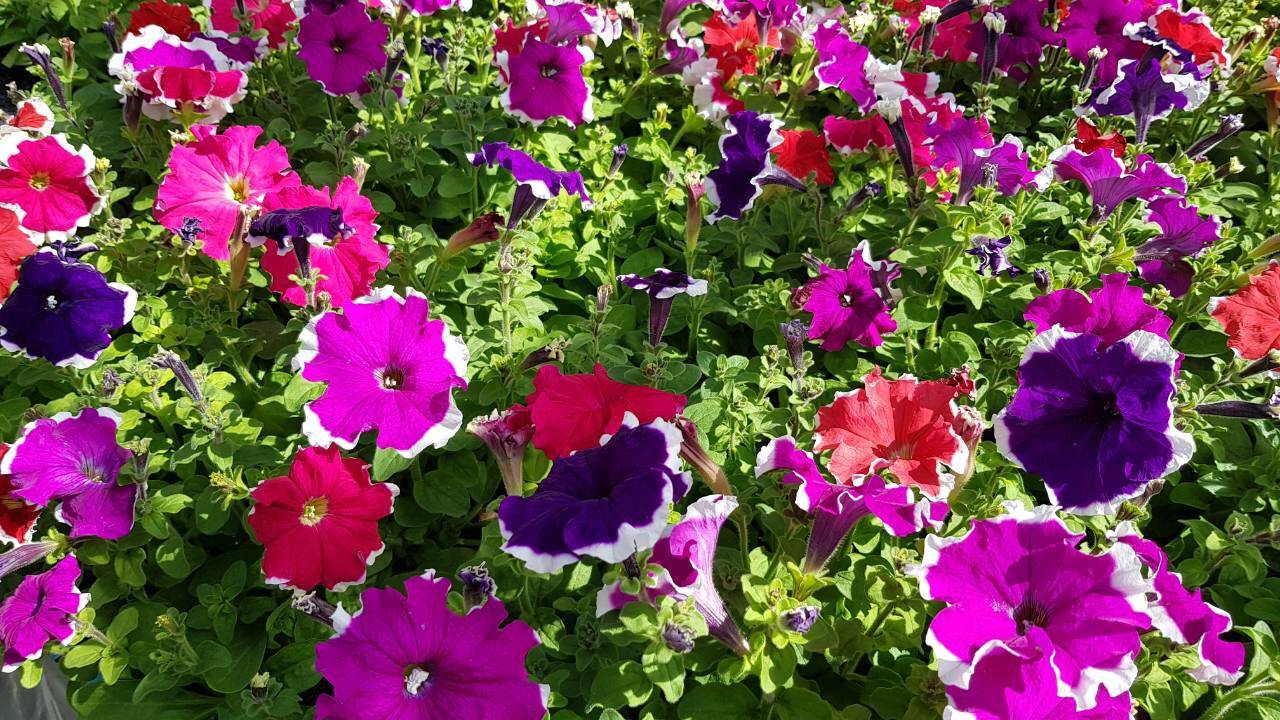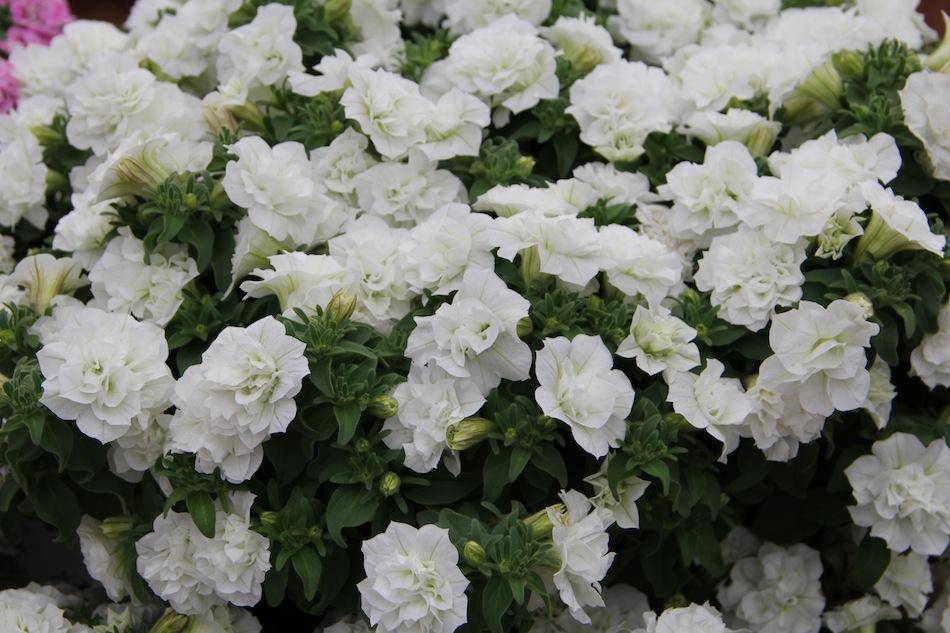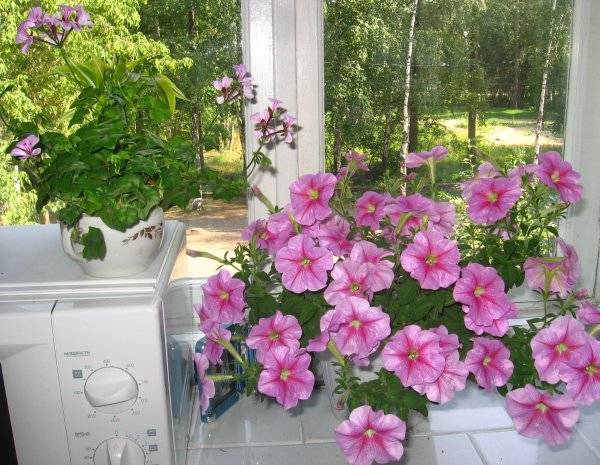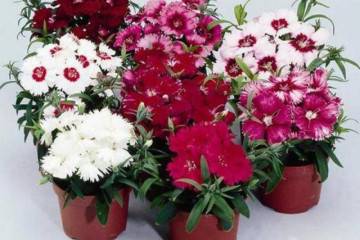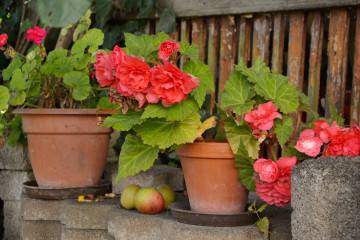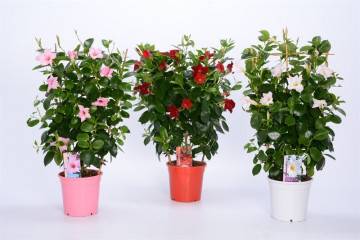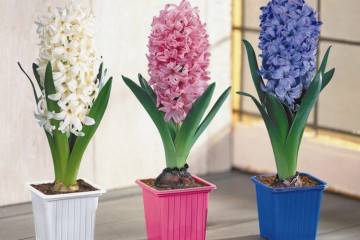Indoor petunia - care and cultivation at home
Content:
Petunia can decorate not only a flower bed, but also add sophistication to a veranda, balcony or room. Its color palette allows you to create win-win flower arrangements that can be grown in planters as a self-sufficient crop. Unpretentiousness makes it possible to breed the plant yourself at home, using seed.
Description
Petunia belongs to the category of bushy plants, which are distinguished by the presence of creeping or erect shoots. Height can reach 25-70 cm. Densely branched stems are literally dotted with oval-shaped leaf plates. The length of the foliage is in the range of 5-11 cm. The formation of funnel-shaped flowers is concentrated in the area of short pedicels. The leaf plates are painted in a bright green palette. The foliage surface is covered with fine villi.
Flowers can be:
- terry;
- fringed;
- ordinary;
- axillary.
Most of the flowers of the decorative culture are painted in the following shades:
- scarlet;
- pink;
- snow-white;
- purple;
- dark blue.
The flowering period lasts from mid-summer to late September. After flowering is completed, fruits begin to form on the bushes, resembling bivalve bolls, inside which seed is collected.
Petunia, which is not difficult to care for and grow at home, is becoming more and more popular among florists every year. It is difficult to find at least one flower bed in the courtyards where these wonderful flowers do not grow.
Common varieties
The plant has been known since the 18th century. Breeders began to breed hybrid varieties only 100 years ago. Among the most popular varieties that can be grown at home both in winter and in summer, several are worth highlighting.
Multiflora
Belongs to the category of multi-flowered petunias, which are distinguished by early flowering. During flowering, the bush is covered with chic inflorescences, the diameter of which reaches 5 cm. Plants of compact size will create a zest in the interior of a small room. The variety is not picky and easy to adapt to new conditions. Can be grown in an apartment all year round.
Fantasy
Hybrid petunia flower, the height of which is in the range of 18-20 cm.The diameter of the buds reaches 30-38 mm. Flowers are painted in crimson shades with a white star, black-purple tones and a scarlet palette with a cream-colored throat.
Mirage
Terry variety, the diameter of the inflorescences of which reaches 55-90 mm. Flowers are painted in purple tones with the presence of a mesh of purple tones, snow-white, crimson and blue-black palette. Flowering continues until autumn. Experts recommend diving the plant in a timely manner.
Plumcrystals
A variety of culture in which the height of the bushes reaches 25-30 cm. The diameter of the flowers is in the range of 6-7 cm. The flowers are painted in various bright shades, the saturation of which gradually fades away.Compliance with the rules of caring for the crop will allow you to get healthy bushes.
Grandiflora
A variety of petunias, the diameter of the inflorescences of which reaches 14-16 cm. There are very few flowers on one bush, however, their dimensional characteristics compensate for the scarcity. The buds are quite fragile. Even strong gusty winds can damage them.
Pearl Pirouette
A large-flowered variety of an ornamental culture, the flowers of which are painted in a rich purple palette. White corrugated hem. Pearl Pirouette looks especially impressive in pots, which are displayed near herbaceous plants.
Hit parade
Low-growing petunia. Flowers of this variety are painted in a varied palette (cream, pink, blue, crimson). The height of compact bushes reaches 35-40 cm. The diameter of the inflorescences is in the range of 9-10 cm. Flowers do not bloom at the same time. The blooming interval is 7-8 days.
Surfinia
Ampel variety, the diameter of flowers of which reaches 8-9 cm. As a rule, inflorescences are colored in yellow and orange tones. Surfinia is unpretentious. Flower pots should be placed on the windowsills on the south side.
Tumbelina
The Japanese variety of petunia is distinguished by the presence of double inflorescences on the bushes. The buds are colored in different shades. The variety needs diffused lighting and regular watering.
Conchita
This is a miniature variety. During flowering, the bush is dotted with opening buds, the diameter of which reaches 4-5 cm. The shades of flowers are varied: white, orange, pink, blue and purple.
Features of caring for petunias at home
Can petunia be grown as a houseplant? If you follow the rules of care, then it is quite possible. The large-flowered variety prefers areas that are reliably protected from dampness and open sunlight. It is very important to protect the flowers from raindrops and gusty winds. Given the large windage of the plants and the tenderness of the leaf plates, it can be assumed that the bushes may not survive bad weather.
Fading parts need to be removed from the bush, which will stimulate the growth of the plant and the formation of new inflorescences. Experts recommend moistening the soil every day. A small amount of water should be poured directly under the root system.
To achieve maximum branching of the planting, you will need to carry out the pinching procedure. For this purpose, the branches located above the fifth internode are shortened. At the same time, it is important to maintain the shape of the lush ball of the bush. To prevent excess liquid from provoking rotting of the root system, it is necessary to take care in advance of organizing a drainage system on the surface of the bottom of the container.
You can fertilize the soil with any fertilizer, which manufacturers produce for flowering plants. The application of fresh manure to the soil should be avoided.
Bloom
Petunia flowers, depending on the variety, can be simple or double. Simple open buds can be:
- whole-edged with the presence of ordinary petals;
- whole-edged with wavy and fringed edges.
According to the dimensional characteristics of the ornamental culture, petunia was subdivided into large-flowered and small-flowered.
The flowering period of the plant is quite long. It lasts almost until the first frost. Flowers are painted in bright shades:
- purple;
- lilac;
- white;
- pink;
- blue;
- red, etc.
Petunia petals can be decorated with exquisite ruffles or thick fringes.
Features of care during the rest period and in winter
During the dormant period, the bushes of ornamental culture need pruning. Dry foliage is cut off.Also, damaged and rotten shoots are removed without regret. If you wish, you can cut the bush short and leave branches, the length of which does not exceed 10-12 cm.
Among the main features of petunia care, it is worth highlighting the need for such factors:
- high air humidity;
- the minimum amount of dressings;
- proper watering (during the dormant period, it is enough to moisten the soil once a week);
- good lighting and a temperature of 12-15 degrees in the room where the pots are displayed.
Home pruning
During pruning, not only the side branches should be shortened, but also the central stem. In the absence of new buds in the area of the central stem, it should be cut as short as possible.
Reproduction
In order to propagate petunia, you can use two methods:
- seed;
- by cuttings.
How to get seeds
Seed material can be purchased at any gardening store or collected by hand. The main signs that indicate the readiness of seeds for collection include:
- yellowing of fruit-boxes;
- wilting of fruits.
Ripe fruits are removed to collect seeds and prevent the growth of flowers from slowing down. Bolls are removed from the collected buds of the ornamental culture. Fruits are carefully peeled from seed material. Below you can find information on how to grow petunia from seeds at home.
Petunia: growing from seeds at home
Propagating a culture in this way is quite simple. Containers for planting with the presence of drainage holes should reach a height of 9-10 cm. The containers are processed with a solution of potassium permanganate.
Procedure:
- A layer of expanded clay is poured onto the bottom surface of each pot. The soil mixture is poured on top.
- After moistening, petunia seeds are sown into the soil. They need to be planted at a short distance. It is not recommended to sprinkle them with earth.
- A film material is pulled over the container.
The container is transferred to a room where the temperature reaches 20 degrees. Every day it is necessary to remove the film cover and moisten the soil with a spray bottle. The seedlings grow strong. If you wish, you can collect the seeds and germinate them in peat tablets.
Reproduction of petunias by cuttings at home
The propagation method is no less popular for propagation. In the summer months or in spring, side shoots should be cut from the bush, the length of which reaches 7-8 cm. There should be 4 leaf plates on the cuttings.
The resulting branches deepen by 2-3.5 cm into the soil mixture. A film is stretched over the container. Containers with cuttings are placed in a room where the temperature reaches 21 degrees. As soon as new leaf plates appear on the cuttings, the shelter must be removed.
Transfer
Before replanting seedlings, it is recommended to water abundantly the soil in which they grow. A drainage layer is laid on the bottom surface of the new rectangular pot. The container is filled with soil. Young plants are planted in the dug depressions in the ground. It is recommended to make a distance of 18-25 cm between the seedlings. The depressions are filled with soil mixture. The soil is abundantly moisturized.
Possible problems in growing petunias
When growing petunias at home, problems can arise, which most often indicate a lack of proper care. Bushes often suffer from late blight, chlorosis and gray rot. In addition, slugs and spider mites can damage the decorative culture. In order to save the plants, the plantings should be treated with special preparations that can be purchased at any gardening store.
Also, flower growers complain that, despite good care, the plant does not please them with flowering. The reason, as a rule, lies in the large amount of nitrogen fertilization that is applied to the soil.
Rotting of the petunia root system is considered a fairly common problem. To cope with the problem, it is necessary to study how to properly water petunias, and establish a soil moisture regime.
Petunia is a gorgeous plant that has gained wide popularity among flower growers due to its unpretentiousness and amazingly bright flowering, which delights every year. By properly caring for an ornamental crop, you can accelerate the growth rate and not face diseases that can lead to the death of the bushes. Breeding chic perennials can diversify the daily routine and effectively decorate the apartment.
